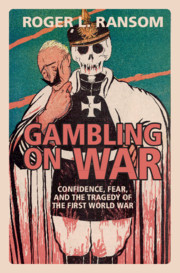Book contents
- Gambling on War
- Gambling on War
- Copyright page
- Dedication
- Contents
- Figures
- Maps
- Tables
- Prologue
- 1 Confidence, Fear, and a Propensity to Gamble
- 2 Otto von Bismarck and the Changing Paradigm of War
- 3 Schlieffen’s Gamble
- 4 A War of Attrition
- 5 Economies at War
- 6 War and Revolution
- 7 The Last Gamble
- 8 The Chaos of Victory
- Epilogue: The Tragedy of a World War
- Appendices
- Acknowledgments
- Notes
- Bibliography
- Index
- References
Bibliography
Published online by Cambridge University Press: 21 June 2018
- Gambling on War
- Gambling on War
- Copyright page
- Dedication
- Contents
- Figures
- Maps
- Tables
- Prologue
- 1 Confidence, Fear, and a Propensity to Gamble
- 2 Otto von Bismarck and the Changing Paradigm of War
- 3 Schlieffen’s Gamble
- 4 A War of Attrition
- 5 Economies at War
- 6 War and Revolution
- 7 The Last Gamble
- 8 The Chaos of Victory
- Epilogue: The Tragedy of a World War
- Appendices
- Acknowledgments
- Notes
- Bibliography
- Index
- References
- Type
- Chapter
- Information
- Gambling on WarConfidence, Fear, and the Tragedy of the First World War, pp. 312 - 326Publisher: Cambridge University PressPrint publication year: 2018



